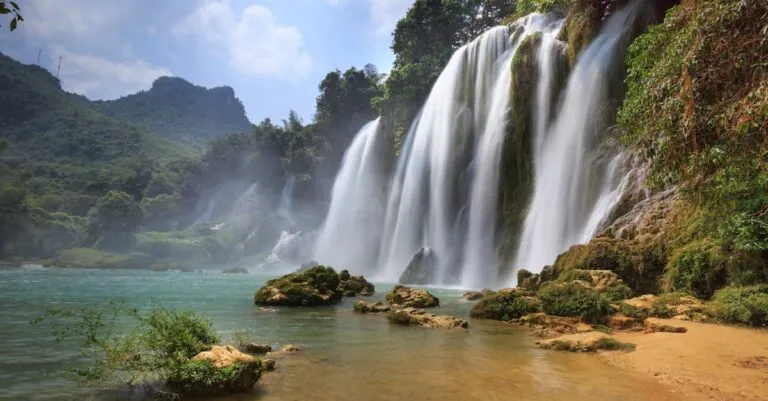Table of Contents
ToggleWhen the sun dips below the horizon and the lights start to dim, many photographers find themselves in a bit of a pickle. Capturing stunning images in low light can feel like trying to find a needle in a haystack—frustrating and time-consuming. But fear not! With the right low light lens, those dimly lit scenes can transform from blurry nightmares into breathtaking masterpieces.
Overview of Low Light Lens Suggestions
Low light lenses facilitate capturing impressive images in dim settings. Selecting the right lens can make all the difference in low-light photography. Fast lenses with wide apertures, such as f/1.8 or f/2.8, help gather more light, enhancing exposure without raising ISO levels.
Several popular low light lenses excel in performance. Canon EF 50mm f/1.8 STM, for instance, offers excellent sharpness and affordability. Nikon AF-S NIKKOR 50mm f/1.8G also provides impressive low light capabilities, along with great bokeh. Additionally, the Sony FE 50mm f/1.8 lens brings light-gathering performance to Sony’s full-frame camera lineup.
Another choice includes zoom lenses. Tamron 15-30mm f/2.8 Di VC USD accommodates wide-angle needs while maintaining a wide aperture. Nikon AF-S NIKKOR 24-120mm f/4G ED VR caters to versatility in numerous shooting conditions.
Photographers also consider prime lenses for the best results. Sigma 35mm f/1.4 DG HSM Art excels in achieving high-quality images, while Fujifilm XF 23mm f/1.4 R provides a compact solution for those using Fujifilm cameras.
Notably, many of these lenses feature image stabilization technology, which further aids in low light scenarios. By stabilizing the camera, photographers can achieve clearer images despite slower shutter speeds. Understanding these options significantly expands creative potential in low light environments.
When selecting a low light lens, assess factors like budget, camera compatibility, and focal length preferences. Doing so ensures an informed decision aligns with specific photography needs.
Types of Low Light Lenses
Selecting the right low light lens significantly enhances photography in challenging lighting. Various types of lenses cater to different needs and preferences.
Fast Aperture Lenses
Fast aperture lenses excel in low light situations, featuring wide openings like f/1.8 or wider. These lenses draw in more light, allowing for greater exposure and improved performance. The Canon EF 50mm f/1.8 STM stands out for its affordability and sharpness. Nikon AF-S NIKKOR 50mm f/1.8G offers excellent low light capabilities with a solid build. Sony FE 50mm f/1.8 provides compatibility with full-frame cameras while maintaining a lightweight design.
Specialty Lenses
Specialty lenses serve unique purposes in low light photography. Macro lenses deliver impressive close-up shots, even in dim lighting. A prime example is the Tamron SP 90mm f/2.8 Di, perfect for capturing detailed subjects. Fisheye lenses, like the Rokinon 8mm f/3.5, create dramatic effects by emphasizing depth in low light scenes. Additionally, tilt-shift lenses enable photographers to control perspective and depth of field creatively, proving useful in various scenarios.
Factors to Consider When Choosing Lenses
Selecting the right lens for low light photography involves evaluating several crucial factors. Understanding these factors enhances the ability to capture stunning images under challenging conditions.
Light Transmission
Light transmission is vital for low light performance. Lenses with wider apertures like f/1.8 or f/2.8 gather more light, improving image brightness. A fast lens, such as the Canon EF 50mm f/1.8 STM, offers excellent light transmission, making it ideal for evening or indoor photography. Optimal performance comes from lenses designed to maximize light entry, reducing the need to increase ISO. High-quality low light lenses facilitate clearer and sharper images even in dim environments. Various manufacturers emphasize this feature in their product specifications, impacting user choice.
Lens Coatings
Lens coatings play a significant role in reducing glare and flare. These coatings improve light transmission by minimizing reflections that could compromise image quality. Many manufacturers apply special multi-coating techniques to their low light lenses, resulting in enhanced contrast and color accuracy. For instance, lenses like the Nikon AF-S NIKKOR 50mm f/1.8G incorporate advanced coatings to optimize performance in less-than-ideal lighting. Photographers seeking optimal results should prioritize lenses with superior coatings for capturing clean images during nighttime or indoor shoots. Such investments contribute to overall satisfaction in low light photography.
Top Low Light Lens Suggestions
Selecting the right low light lens enhances photography in challenging lighting conditions. Here are some top suggestions for prime and zoom lenses.
Prime Lenses
Prime lenses excel in low light scenarios due to wide apertures. The Canon EF 50mm f/1.8 STM gathers ample light, making it a popular choice for sharp images. Similarly, the Sigma 35mm f/1.4 DG HSM Art combines clarity with a versatile focal length for stunning results. Fujifilm’s XF 23mm f/1.4 R also stands out for its excellent low light capabilities, ideal for street photography. Each of these options provides photographers the advantage of enhanced brightness and detail, even in dim environments.
Zoom Lenses
Zoom lenses offer versatility for various shooting conditions while performing well in low light. The Tamron 15-30mm f/2.8 provides a constant aperture, allowing for consistent light gathering across its focal range. Nikon’s AF-S NIKKOR 24-120mm f/4G ED VR is another solid choice; it balances image quality with a flexible zoom range. These zoom lenses accommodate different scenes without sacrificing exposure, making them essential tools for photographers working in low ambient light.
Choosing the right low light lens can transform challenging photography situations into opportunities for stunning visuals. Fast lenses with wide apertures are essential for capturing clear images in dim environments. Whether opting for prime lenses known for their sharpness or versatile zoom lenses, photographers should prioritize features like light transmission and lens coatings. By considering individual needs and preferences, such as budget and camera compatibility, photographers can enhance their ability to capture breathtaking images even in the most difficult lighting conditions. Investing in a quality low light lens is a step toward unlocking the full potential of low light photography.








